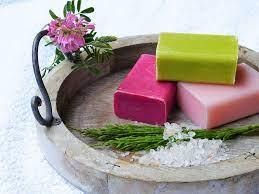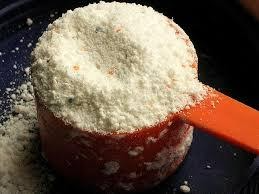Difference Between Soap and Detergent - Properties and FAQs
Soaps are sodium or potassium salt of carboxylic acid attached to a long aliphatic chain. While detergents are sodium or potassium salt of benzene sulphonic acid generally alkyl benzene sulphonates. Soap and detergent are used for the removal of dirt, impurity, and grease. Soap when coming in contact with water and impurity forms lather and remove dirt while detergents covert the insoluble substance into its soluble form. Let us now discuss soap first. Soaps are also given the name surfactant and because it reduces the surface tension between liquids.
NEET 2025: Mock Test Series | Syllabus | High Scoring Topics | PYQs
JEE Main: Study Materials | High Scoring Topics | Preparation Guide
JEE Main: Syllabus | Sample Papers | Mock Tests | PYQs
- Properties of Soap
- Types of Soaps
- Toilet Soaps
- Non-Toilet Soap
- Glycerine Soap
- Transparent Soap
- Liquid Soap
- Kitchen Soap
- Washing Soap
- Novelty Soap
- Medicated Soap
- Beauty Soap
- Grad 1 Soap
- Detergent Soap
- Preparation of Soap
- Characteristic Property of Detergents
- How is Detergent Made?
Saponification of fats and oils is the general method for the preparation of soaps that is from plant and animal fats. The carboxylate end of the soap molecule is hydrophilic in nature and the hydrocarbon tail is hydrophobic which means they are amphiphilic. It is also the metal salt of a fatty acid that can be used for lubrication and cleaning purposes. If the solution contains minerals that will significantly increase the effect of soap, solutions containing minerals are chosen prior to solutions that do not contain minerals.
They are biodegradable so when talking about the environment, soaps are good. And also it is produced from natural ingredients. Soaps do not work well in hard water because hard water contains calcium and magnesium ions which when contact with the hard water developed by the solder it is called scum.

Also read -
When talking about detergent they are usually surfactant and having cleaning properties when they are formed as a dilute solution with water. Just like a soap it also contains a hydrophobic and hydrophilic region that is there are also amphiphilic in nature. Detergents are sodium salt of phosphates or sulfate. In compared to soap detergents works well in hard water as it does not form any scum with calcium and magnesium ions present in hard water. And it is a very important property of detergent that is easily soluble in hard water as well.
Also has a very good cleaning action than soaps do. Detergents are prepared with the help of phosphates dioxide and surfactants to salt and citric acid. Detergents in the dry solid form are most commonly used but also detergents in the liquid form are also now present which is prepared with the use of a high amount of water during the preparation procedure.

detergent powder
Properties of Soap
Some of the important properties of soap are described below;
The sodium or potassium salt of the carboxylic acid is defined as soap and is attached to a long aliphatic chain.
Soaps are given the name surfactant due to their ability to reduce the surface tension between the liquid and some other substance and also it is very good for the emulsification process of oils in water.
They are produced by a process called saponification with the help of fats and oils that are generally natural in origin.
They are amphiphilic in nature having a hydrophilic and hydrophobic group in a single molecule of soap.
Soap is a type of salt.
Soaps are generally used for washing, bathing, and as a cleaning agent in household activities.
In addition to the domestic application, it also finds some industrial application that it can be used as a lubricant and also a catalyst precursor.
The action of soap in cleaning is to form lather when rinsed with water and it kills microorganisms present in the dirt.
Types of Soaps
Soaps are categorized depending on their usage and production method some of these soaps are described below.
Also read :
- NCERT notes Class 12 Chemistry Chapter 16 Chemistry in Everyday life
- NCERT solutions for Class 12 Chemistry Chapter 16 Chemistry in Everyday life
- NCERT exemplar class 12 Chemistry solutions chapter 16 Chemistry in Everyday life
Toilet Soaps
The soaps that have a high efficiency to clean East toilet soaps because the TFM that is total fatty matter in comparison to other soap is very high. They have cosmetic use as well.
Non-Toilet Soap
The stop that can clean heavy dirty like grease and stains are known toilet soaps. They are also called hard soap. This type of soap is used for lubrication actions just like greases.
Glycerine Soap
As glycerine is a component of fat and oil glycerine is formed as a byproduct in the chemical reaction for the making of soap. But many manufacturers purposefully remove this glycerine for making that for some other cosmetic products preparation.
Transparent Soap
The soap that is made by the hot process method is transparent in nature that during their preparation some form of alcohol is added to make it transparent. As a substitute for alcohol sugar syrup is also used for making a transparent sore but alcohol is more good. A ready-made soap base is now available in the market for transparent soap preparation.
Liquid Soap
In comparison to soap bars, the making process of liquid soap is much more complicated than it, requires a hot process method also. Hindi preparation process potassium hydroxide is used instead of sodium hydroxide and it makes the soap in the liquid form and more water is added during the procedure.
Kitchen Soap
The soap mainly used for dishwashing is kitchen soap. They are not safe for the skin.
Washing Soap
Mainly used for washing clothes as it removes dirt and grease from the clothes. When dirt and grease come in contact with this it forms lather and removes dirt along with water. It is also used as a lubricant and thickeners in the industrial field.
Novelty Soap
The soaps that are found in various shapes colors like fish, cake, etc. are novelty soap. Mainly prepared for enjoyment and entertainment for children who use them.
Medicated Soap
Soaps that contain antiseptics and disinfectants for killing bacteria medicated soap.
Beauty Soap
The soap containing ingredients for a different type of skin and different flavors of fragrance are beauty soap. It contains glycerine.
Grad 1 Soap
The quality of soap is determined by the value of TFM. The soaps having 76 percent TFM minimum are grad 1 soap.
Related Topics Link, |
Detergent Soap
Any substance that is used for cleaning purposes is detergent. So soap is a type of detergent that is mild in its cleaning action. Soaps are made up of fatty acids from natural ingredients and it contains oils and fat. While detergents are made by artificial derivatives.
Preparation of Soap
The carboxylic acid with long-chain alkyl group is fatty acids. When this fatty acid is heated in presence of sodium hydroxide or potassium hydroxide solution soaps are formed since the process involved in the formation of soap is called saponification. It is a hydrolysis reaction. Soaps are obtained the first in the form of a colloidal form which is then precipitated by adding sodium chloride. For the making of antibacterial soap compounds such as triclocarban and triclosan are also added.
Characteristic Property of Detergents
Detergents are chemical substances that are commonly used for removing grease and stains and soaps are a type of detergent.
One of the important ingredients in detergents is surface-active agents.
They are very good dinner hard water as it does not form scum with hard water.
Detergents are water-soluble and they make impurities and grease in a form of a soluble substance and which can be then removed easily by using water.
Detergent is not made from natural means so it is not biodegradable also.
Also read -
- NCERT Solutions for Class 11 Chemistry
- NCERT Solutions for Class 12 Chemistry
- NCERT Solutions for All Subjects
How is Detergent Made?
Detergents are not made by the saponification process and it requires a huge chemical processor so they are generally prepared in a chemical plant.
Also check-
Frequently Asked Questions (FAQs)
Detergents are a type of chemical substance used for washing clothes and dishes present in the form of powder or liquid. They are generally sulphonate or ammonium salt of long-chain carboxylic acids.
Common salt is one of the important ingredients used in the manufacture of soap. During the manufacture of soap first, a colloidal solution is obtained common salt is used to precipitate out soap as it reduces the solubility of soap in water. The process is called salting out in chemistry.
A water-soluble cleaning agent activates the formation of water-soluble substances from impurities and grease. And are easy works on hard water without forming scum.
A water-soluble cleaning agent and a type of detergent used for the removal of impurity and grease by converting them into a lather and thereby removing impurity by the action of water.
The sodium or potassium salt of the carboxylic acid is defined as soap and is attached to a long aliphatic chain.
Soap is a type of salt.
Also Read
02 Jul'25 07:53 PM
02 Jul'25 07:48 PM
02 Jul'25 07:48 PM
02 Jul'25 07:48 PM
02 Jul'25 05:25 PM
02 Jul'25 05:25 PM
02 Jul'25 05:24 PM
02 Jul'25 05:24 PM
02 Jul'25 05:24 PM

